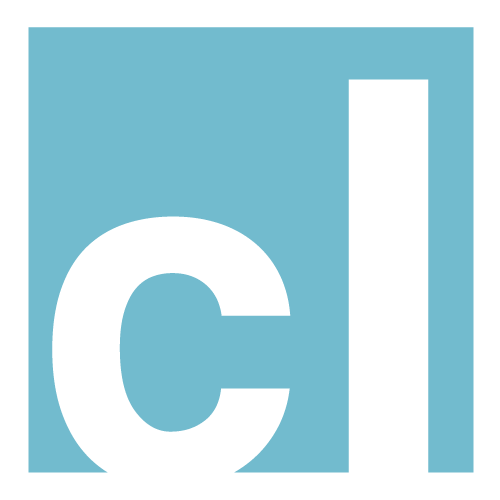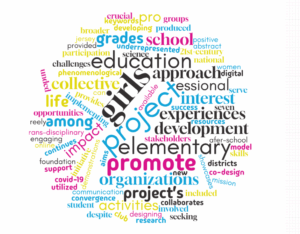The Effectiveness of Using Near-Peer Role Models and Mentoring: A Phenomenological Reflection on STEM for Success
Eficacia del Uso de Modelos a Seguir Cercanos y Mentoría: Reflexión Fenomenológica sobre STEM for Success
By: Bruce Bukiet, Cristo León, and James Lipuma
Blog post about the article by Bukiet, León, and Lipuma (2023) published in the Atena Editora Journal of Engineering Research, last updated on October 08, 2025.
Introduction
The LiFE project is an NSF-funded initiative that promotes interest in STEM among girls in grades 2 to 6 across seven New Jersey school districts. Using a collective impact approach, the team co-designed activities with stakeholders, including professional development for educators, STEM club support, and student showcases. During COVID-19, the project delivered online demonstrations and open digital resources. The program’s after-school opportunities support engagement and 21st-century skills. Its mission continues through STEM for Success, which partners broadly to provide positive, early STEM experiences. The article offers a model that other organizations can adapt to increase elementary girls’ participation in STEM.
What Challenge Does the Article Address?
- Persistent underrepresentation of girls in early STEM pipelines.
- Limited access to authentic role models and sustained mentoring in elementary grades.
- Need for coordinated, school-community strategies that can withstand disruptions such as COVID-19.
What Do We Offer?
The article presents a practical model that blends near-peer role models, mentoring, and collective impact.
- Co-designed professional development and after-school club supports.
- Near-peer mentoring structures that normalize girls’ participation in STEM.
- Freely available digital demonstrations and resources for continuity.
Who Will Benefit from This Work?
- Elementary school leaders and teachers seeking scalable STEM engagement models.
- Community partners and nonprofits building mentoring pipelines.
- District teams planning collective impact initiatives for broader participation.
Download or View
Cite this Paper
Bukiet, B., León, C., & Lipuma, J. (2023). The Effectiveness of Using Near-Peer Role Models and Mentoring: A Phenomenological Reflection on STEM for Success.
Atena Editora Journal of Engineering Research, 3(18), 1–7.
https://doi.org/10.22533/at.ed.3173182302061
DOI: 10.22533/at.ed.3173182302061
ISSN: 2764-1317
Volume: 3 | Issue: 18 | Pages: 1–7
Publisher: Atena Edição de Livros Ltda
Rights: Creative Commons Attribution, Non-Commercial, No-Derivatives 4.0 International (CC BY-NC-ND 4.0)
Keywords: Professional Development; STEM Education; Collective Impact; Trans-Disciplinary Communication; Broader Participation; Co-design; Elementary Education; Convergence Approach; Phenomenological Research; Women in STEM
Acknowledgments
Support for Leadership and iSTEAM for Females in Elementary School (LiFE) and STEM for Success was provided by the National Science Foundation under award number #1744490 and by the Howmet Aerospace Foundation.
Interested in Exploring or Collaborating?
Are you building near-peer mentoring or after-school STEM pathways for girls?
Share this post, or cite the article to advance equitable participation in STEM.
Versión en Español
Eficacia del Uso de Modelos a Seguir Cercanos y Mentoría: Reflexión Fenomenológica sobre STEM for Success
Entrada de blog sobre el artículo de Bukiet, León y Lipuma (2023) publicado en el Atena Editora Journal of Engineering Research.
Introducción
El proyecto LiFE, financiado por la NSF, promueve el interés por STEM en niñas de 2.º a 6.º grado en siete distritos de Nueva Jersey. Con un enfoque de impacto colectivo, el equipo co-diseñó experiencias de desarrollo profesional, apoyo a clubes de STEM y exhibiciones estudiantiles. Durante la pandemia se ofrecieron demostraciones en línea y recursos digitales abiertos. Las actividades extraescolares fortalecen habilidades del siglo XXI y la misión continúa con STEM for Success mediante alianzas para experiencias tempranas positivas en STEM.
¿Qué problema aborda el artículo?
- Brecha de participación de niñas en STEM desde la primaria.
- Falta de modelos a seguir cercanos y mentoría sostenida en edades tempranas.
- Necesidad de estrategias coordinadas que resistan interrupciones como COVID-19.
¿Qué aportamos?
- Desarrollo profesional y apoyos extraescolares co-diseñados con actores locales.
- Estructuras de mentoría con pares cercanos que normalizan la participación de niñas.
- Demostraciones y recursos digitales abiertos para continuidad del aprendizaje.
Cita el artículo
Bukiet, B., León, C., y Lipuma, J. (2023). Eficacia del Uso de Modelos a Seguir Cercanos y Mentoría: Reflexión Fenomenológica sobre STEM for Success.
Atena Editora Journal of Engineering Research, 3(18), 1–7.
https://doi.org/10.22533/at.ed.3173182302061
Podcast
🎧 Escucha el podcast (duración: [X:XX] minutos)

